I have been wanting to write a how-to lesson on how best to optimize your content marketing efforts, and I was fortunate to stumble on a great post from my good colleague Andy Crestodina, Strategic Director at Orbit Media Studios, a content marketing agency who is expert on the topic. So, instead of writing a very similar lesson from scratch, Andy was kind enough to let me repurpose his wisdom as a Red Rocket lesson and guest post.
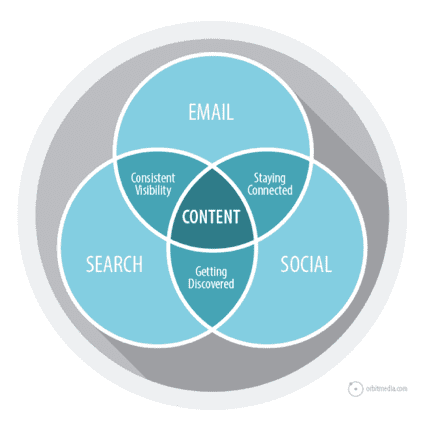
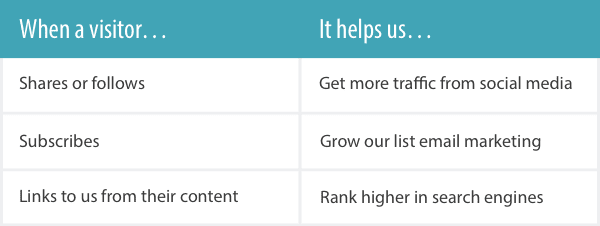
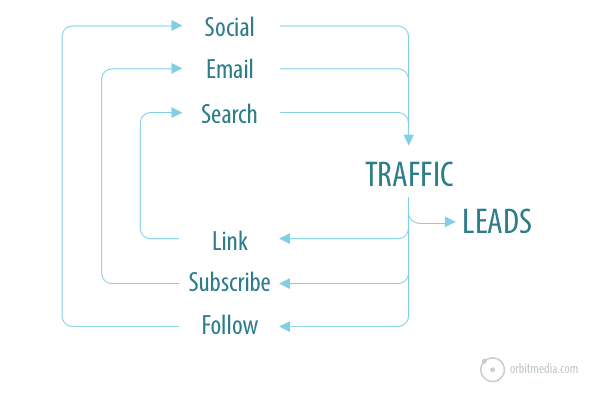
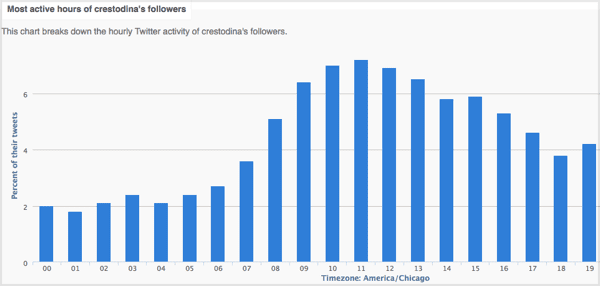
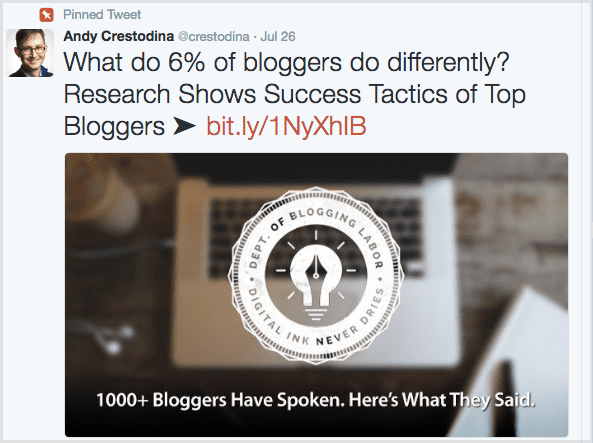
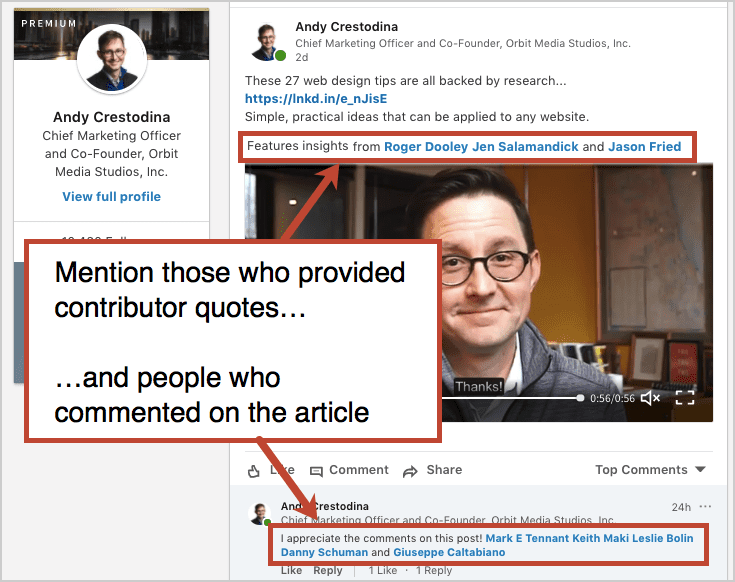
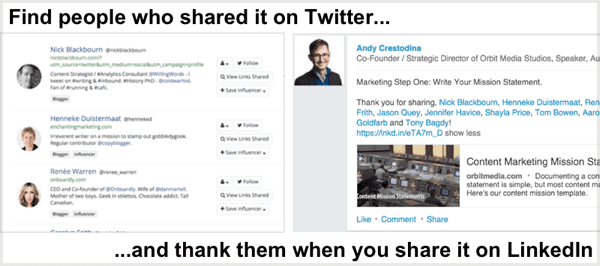
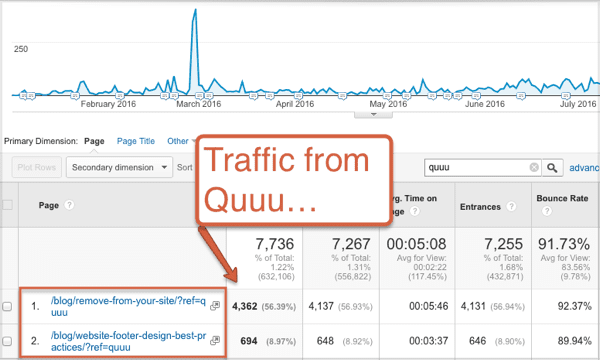
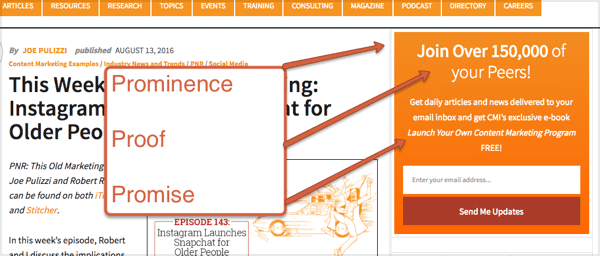
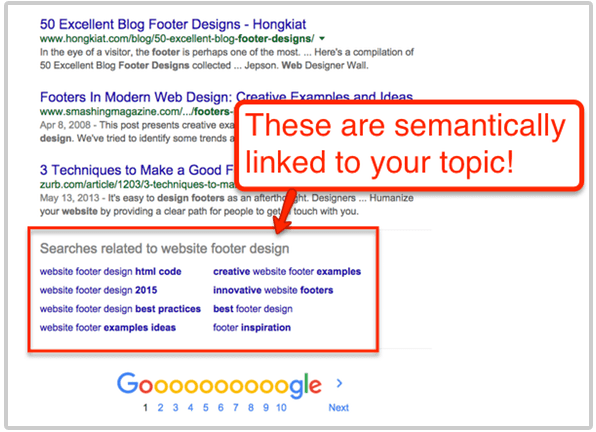
The guts of this post originally appeared on the Orbit Media Studios Blog. Thanks again, Andy, for sharing your wisdom with our readers!
Where there’s traffic there’s hope. A visitor is an opportunity for conversion, which could mean a lead, a customer or a subscriber. But no traffic means no conversions.
This is why content marketers work so hard at content promotion.
And we do it by being active in three areas: search engine optimization, social media marketing and email marketing. Certain content has advantages in certain channels, but every piece of content can be promoted in all three.

Let’s look at how this all works with content. Then we’ll explore 50 specific content promotion activities in this checklist for driving traffic.
Content Promotion Feedback Loops
The good news is that traffic leads to more traffic. Once we attract a visitor, their actions may help us with content promotion. Different actions help in different channels.

A visitor from any channel may help us with any other channel, creating a feedback loop. The idea is to create a virtuous cycle of actions taken by you, then traffic, actions taken by visitors, then more traffic and eventually, leads and sales.

But to get the process started, we need to prime the pump. That’s what this post is all about.
So here’s the mother list! Try a few or use them all. As always, there isn’t just one thing that makes a piece of content (or business) successful. It’s a hundred little things…
Social Media
Connect with relevant people and engage them in conversation.
1. Tweet it.
Around a third of your tweets should be self-promotional links to your content. The rest should be conversations and promotion of other people’s content. When you tweet, add a few of these and you’ll increase the click through rate:
- A number
- A specific benefit
- A question
- A special character
- A hashtag
2. Targeted sharing: mention people who will love the article.
Use a Twitter search tool to find relevant people with large followings who would be interested and likely to share. Mention one or two of them at the end of another tweet. Here are instructions explaining exactly how to find people who will love your article.
3. After you tweet, follow a few people who are interested in the topic.
Search twitter for people with bios that include words that are relevant to the topic of the post, then follow them. These people will see your recent tweet at the top of your stream. They’re more likely to follow you since the content is especially relevant to them at that moment.
4. Tweet a quote from the content.
Take a juicy nugget out of the post and use it in the tweet. If the post contains data or statistics, these make good quotes that you can use in tweets. It will increase the clickthrough rate.
 |
“I love to share a nugget I learned from each article when I share it. Rather than just plop a link out there and rave about how good it is, I offer a proof point. Even if folks don’t click, hopefully they learned something. Think of how you’d talk about the article at a happy hour: “I read this great article on celebrity pet endorsements where I learned that Grumpy Cat only endorses five products…” – Jessica Best
|
5. Mystery Tweet
Try a tweet that doesn’t provide a lot of information about the topic, such as “I’m surprised this trick worked!” or “This post is short but was hard to write…” If you don’t reveal too much, people may click just to see what you’re talking about. Don’t overuse this tactic.
6. Near future tweets
Schedule at least four tweets for the future. Time them to the highest traffic times in twitter: Monday – Thursday mornings (around 9am), late afternoon (around 5pm) and nighttime (around 10pm). Or use counter-competitive timing and do the opposite. Schedule a few for day two, a few more in a few days, and again in a week.
7. Distant future tweets
If the post is evergreen and will not go out of date soon (in other words, it’s not about new or fast changing trends) schedule a tweet promoting the post three, six and twelve months in the future.
Pro Tip: If you write an event recap email, schedule another tweet to go out when registration opens for the subsequent event, even if it’s ten months away.
8. Tweet at 9:57 or 10:03, just before or just after the hour
A lot of people use social sharing tools, and they often schedule shares to go out at the hour or half hour. To avoid getting buried in the social streams, schedule your Tweets to go out just before or just after the hour. Jay Baer calls these “micro-opportunity windows.”
9. Post it late at night, or during off hours
Tools like FollowerWonk will show you when your audience is active. This might look like the best time to share, but it’s also the noisiest. Try sharing when social streams are quiet, such as the middle of the night. Counter-competitive timing can make you more visible. It can also attract an international audience.

 |
“Put out a bangin’ article and find a great image to go along with it. Then post it to your Facebook account in the wee hours of the night. If that doesn’t work, have Neil Patel share it with his audience
 .” – Sean Work .” – Sean Work |
10. Make sharing easier with Click to Tweet buttons.
Make the juiciest quotes easy to share. Set up a little button that lets readers share on Twitter with a simple click. You can do this manually using Click to Tweet or find a plug-in for your CMS that does it for you.
11. Pin it to the top of your Twitter feed.
Now that you’ve seen which tweets get the most traction, take the best one and pin it to the top of your Twitter feed.

12. Post on Facebook.
Make sure there’s an image and that the headline looks good. Mention anyone whom you included in the article. If appropriate, ask friends, family and co-workers to like and comment on the post. More interaction means it’s more likely to appear in more people’s streams.
13. Post on LinkedIn.
Same as Facebook: post, make sure the image appears, mention anyone relevant, and stimulate initial engagement. If you have a business page and a personal page, post it to the business page first, then share it from your personal page.
14. Make a social media video to promote it
Text and images are nice, but social media video is far more powerful. Make a mini-commercial for your article, introducing it to your followers. The click through rates will be far higher than your typical social post.

15. Cross the streams.
A few days after sharing it on Twitter, check BuzzSumo to see who shared it. Also look to see who commented. Pick out any familiar faces and now share the article again on LinkedIn (or any other network). As you do, say thank you to these people for their shares and comments.
Since they’ve already seen and liked the article, they’re very likely to share, like and comment again in this network.

16. Meta-promotion / Feedback loop.
If the post starts becoming successful, Tweet and post about how people seem to like it. “Wow, this one is getting a lot of comments this morning [link]!”
17. Share it in Slack or with your internal network.
If you have any internal collaboration tools, make sure to post the piece there. Employee advocacy is a missed opportunity. Give your team a gentle nudge to share with anyone who might find the article useful.
18. Share it in Facebook LinkedIn Groups.
If appropriate, share the link with a group in which you are actually engaged. If the group includes some high-value connections, plan ahead and start a relevant conversation with people in that group before you publish and promote the content. Ask a question to trigger some discussion.
19. Post on Reddit.
Spend some time picking out the right subreddit and getting to know it’s redditors. Share your post and start a conversation.
 |
“I am a huge fan of Reddit. With its labyrinth of subtopics (subreddits), it offers marketers the ability to drill down to a specific audience (segmentation FTW!). I’ve seen content take off in a viral way on Reddit–content that otherwise might never have reached that level of visibility written by lesser known but completely deserving authors.” – Mary Garrick
|
20. Pin it on Pinterest.
This works best if you have highly visual content (like an infographic) or an article with a great picture.
21. Try older networks.
StumbleUpon, Alltop and Delicious are all still out there. And if you had an account there once, it’s probably still active. It only takes a minute to log in and share!
22. Answer a related question on Quora.
Someone is talking about your topic on Quora. Find the related questions and jump in with a thoughtful, detailed answer. Don’t repost your article. Write something sincere and original, then mention and link to your article.
23. Post a summary on niche social sites.
If you have accounts on any smaller membership sites, forums, association sites, networking groups, and anywhere else you can post content, use only a short summary or excerpt and then link to the article. Include an image to make it more visible.
If it’s a marketing article, Growth Hackers and Product Hunt are all good examples of niche communities where you can promote, share and engage.
24. Syndicate on LinkedIn.
After it’s run it’s course on your website, and the visits and shares seem to have died down, copy and paste it into LinkedIn. If the topic isn’t relevant to a broad business audience, consider editing it to make sure it has wide appeal. Add a call to action at the end of the post, encouraging readers to visit your site.
25. Syndicate on Medium.com.
As above, adapt it for a more general audience and paste it (full or as an excerpt) into Medium.
 |
“Syndication rules, especially if you value eyeballs over traffic. In some cases (LinkedIn, Medium), you can simply copy and paste in your posts. Better yet, find an outlet with a large audience eager to republish your posts. I syndicate most of my posts on Social Media Today, and it ranks second only to Twitter for referral traffic to my blog.” – Barry Feldman
|
26. Social Media Automation
Rather than manually creating each and every tweet and LinkedIn post, promote your content using an automated tool. Edgar is one of those tools.
With Edgar, you can write the post once, but have it push to social networks over and over again, in a continuous rotation. Before judging this tactic (or for specific tips on how to do it right) check out these instructions for social media automation.
 |
“My favorite promotion tactics are ones that I can automate, but I use a variety of angles. I include click-to-tweets in my post, so it’s easy for readers to share. I manually promote it to social media during week one, then load quotes from the post in SocialJukebox to automate regular mentions.” – Kathryn Aragon
|
27. More Social Media Automation
Edgar automates sharing of your content from your social accounts. Here’s a way to automate the sharing of your content from other people’s accounts: Quuu.
Post your article to Quuu and once approved by their team, it will automatically be shared from the accounts of other people who use Quuu. Two caveats: you may have to lend your accounts to other Quuu users, and you may have to pay for the service. If it works, you may drive tons of traffic without a ton of effort.

28. Use Buffer to test possible email subject lines.
Before we move on to email marketing, consider this: you can A/B test possible email subject lines using Buffer, but you’ll need a good-sized following. Buffer makes it easy toschedule several tweets (removing timing as a variable) and track what worked and what didn’t. You can use the winning tweet to inform your next email subject line.
ProTip: We recommend promoting your content for a day or two in social media before sending it out through email. The social visitors may leave comments, which makes the post look better when the all the email subscribers come to visit.
Email Marketing
Email is one of those channels that gets more powerful over time. The larger you’ve grown your list, the more effective these next strategies will be.
29. Email
Send the article as a newsletter to your list. It should include the following:
- A sender name that’s a human, not a brand.
- A compelling subject line with a psychological hook, possibly a number.
- Teaser text in the email that describes the main benefits in the content.
- A compelling call to action.
- Add tracking code to the link.
Send the email at a consistent time that works for your list. Research suggests early mornings and weekends, but test for yourself.
 |
“Our biggest marketing asset is the one we nurture every day: our email list! At Telestream, we do webinars, live video streams, promotions and special offers. So when promoting content or events, we start with our base. We also partner with other leaders in our space to reach out to new prospects that may not have heard of our products before but are using complementary services.” – Andrew Haley
|
30. Send an “In case you missed it” follow-up email.
Three days after sending, run a report showing the people who didn’t open the first email. Send it again to these people with a different subject line.
31. Email it directly to high-value contacts.
Prospects in the pipeline, influencers in your industry, journalists and editors. One of these readers is worth a thousand strangers. Put quality above quantity by taking a minute to send a personal email, inviting that special someone to take a look and share their feedback.
Few people do this. Many people should.
 |
“What works best for us by far is to email the post to a targeted group of our users. We track what they are interested in through opens/sharing etc., so hopefully the mail is relevant and also not cold as it is to our subscribers. We get far more traction from email to promote a post than say social or advertising. I still think our most important asset remains our email subscriber list.” – Steve Rayson
|
32. List growth: the subscription box.
Make sure the email signup box is optimized and includes the three Ps:
- Prominence: it’s visually obvious
- Promise: it tells them what they’re getting
- Proof: it shows that other people are also subscribed by showing the list size or a testimonial

33. List growth: personal invitations.
If you meet someone who is interested in the topics you write about, tell them about what you publish and offer to subscribe them but without pressuring them in any way. These personal invitations often lead to a very engaged subscriber.
34. Prevent list shrinkage: LinkedIn.
Watch your bounces. If you get a hard bounce, the subscriber may have changed jobs. Find them on LinkedIn, restart the conversation, then offer to add them your list again.
 |
“Content promotion needs to be a mindset. Start with one primary channel you can master, with one or two other channels you use to support that main channel. Personally, I love reaching out to influencers and building a relationship with them. As you add value to influencers, I find they tend to reciprocate in kind. Outreach is primarily done through a cold email, but I have done it through Twitter, Facebook, and LinkedIn.” – Jason Quey
|
Search Engine Optimization
Search is one of the most durable ways to drive traffic over time. Indicate the relevance of your content so Google can help people find you.
35. Align the post with a keyphrase.
Do a bit of keyword research and pick a phrase that meets two criteria:
- People are searching for it (good search volume)
- You have a chance of ranking for it (not too competitive for your site, based on your domain authority)
Use the phrase at the beginning of the title, in the header, in the meta description and up to four times in the body text.
36. Use related phrases in the article.
As you write your article, work in the related words and phrases. This is one way to target the topic, not just the keyphrase, aligning your post with “semantic SEO” which is a mega-trend in marketing.

37. Link to the post from other posts.
You can help the rankings of your article through a bit of internal linking. This can be a link at the bottom of another of your articles, under “related links” or it could be a link within the body text. Either way, make sure the text within the link includes the keyphrase you’re targeting. That little link will help visitors find it and it tells Google that it’s an important page.
ProTip: If you’ve been active in content marketing for long, you probably found that a small number of your posts get a large amount of your traffic. These are your traffic magnets. Adding a link from one of these to anything you’re actively promoting is one of the fastest ways to promote anything.
More Ways to Promote Your Content
Let’s take it a bit further. Here are more ways, less obvious ways to get that article in front of potential readers.
38. Put it on your homepage.
Does your latest article automatically push to the homepage of your website? If not, put it there manually. Your homepage is probably one of the most popular pages on your site.
ProTip: If you know the top path through your website, you’ll get more ideas on how to promote your content, or where to put that great testimonial or beautiful video.
39. Put it on your thank you page.
When a visitor becomes a lead or a newsletter subscriber, they land on a thank you page. This page is often a dead end on your website, but it doesn’t have to be. It’s an opportunity to share your latest, high-value article with your new lead. Give them something useful, rather than a blank page.
40. Put it in your email signature.
You send email everyday. Every message is a chance to share your latest article. Updating your email signature takes less than a minute and can bring your latest piece to the attention of hundreds of people per week.
41. Mention it in presentations, webinars, podcasts.
It should be very natural to mention your content in the context of a presentation. “Actually, we just wrote about this on our blog…” Suggest that the article be included in the show notes, the slides or in a follow-up email.
 |
“While it can be tricky to measure, mentioning really relevant content in a podcast (and linking to it from your podcast show notes) can be a great way to promote your content. This might not drive volume, but it will drive a highly engaged user. Using a unique url that’s easy for people to remember can help measure results.” – Hana Abaza
|
42. Mention it in sales and other meetings.
Even if you never give presentations, there are other conversations where it’s perfectly relevant to mention your recent articles. Sales meetings, customer service calls, client trainings are all places where you can offer to share the post. When you send the follow-up email after the meeting, include the link.
43. Include others in the article, then email them encouraging them to share.
Content that was created together with other people is much easier to promote. One of the reasons that contributor quotes, roundups and interviews are so popular. So include others in your articles, then once it’s live, send them an email, encouraging them to share. You can even provide them with pre-written tweets.
44. Guest blogging: mention your article in a new post for another website.
If you wrote the “5 Best Practices for Jet Pack Maintenance” and published it on your site, it’s time to write “The 5 Biggest Jet Pack Repair Mistakes” for another site. This evil twin blog post is likely to be a great pitch, and it will naturally link back to the original on your site.
 |
“My favorite content promotion tactic is bylined articles (AKA guest blogging). I actually write more for other websites than I do for Relevance. The reason is simple – I want to get my work in front of new (and hopefully) bigger audiences while citing prudent content on Relevance. This can lead to a cascade of new subscribers and/or leads for Relevance.” – Chad Pollitt
|
45. Facebook and Twitter Ads
Advertising these days is trackable and targeted, especially on social networks. And an ad that promotes an article may get a lot more attention than an ad that promotes the business directly.
 |
“Paid is a four letter word to some marketers, but I like to put a little paid oomph behind my content promotion. I’m not asking anyone to buy anything. I’m simply trying to reach my target audience. The cool thing is you don’t have to spend much if you keep your targeting very focused.
One way to do this—take a site you know is popular to your audience and use it to find similar sites they also visit using Alexa’s Audience Overlap Tool. Then build a custom audience for Facebook Ads based on people who like the Facebook pages of those websites. ” – Kim Cooper |
46. AdWords
The cost for targeting super specific, niche phrases is very low. Set a small budget and test a few variations of ad copy. If the landing page has a well optimized email signup form, you may find that the cost was worth the subscribers.
47. Retargeting
It’s easier than ever to invite people back to your website. Retargeting isn’t expensive or difficult to set up. Promote your content in an ad that appears only for visitors who have visited your site once before. I
 |
“We’ve been investing a ton in social promotion of our best content on Facebook and Twitter. It’s not free but if you use remarketing and other demographics/interests/behavior-based targeting, you can (a)make sure the right people see your content and (b) usually drive engagement rates (and Relevancy Score) up pretty high so as to dramatically drive down cost per click to just pennies or less.” – Larry Kim
|
48. Native advertising
They’re popular because they’re effective. Networks like Taboola and Outbrain cost money, but they can put your article in front of a huge audience. Test and optimize your headline and image in the social networks before you set a big native ad budget.
49. Include it in a roundup of related posts.
Once the initial promotion efforts die down, bring it back to life by putting it at the top of a roundup post. Pick three or four related articles and package them up into a list post, summarizing the main point of each with a link to each article.
50. Reformat and republish
If it worked well as a blog post, it will likely work even better in other formats:
- Video – record yourself explaining the topic in detail. Post it again on your site and on YouTube.
- Infographic – make it a long, detailed visual. Post it on your site and on on Visually.
- Slideshow – put the visuals into Powerpoint. Post it on your site and on Slideshare.
- Ebook – expand it and add those visuals. Post it on your site and on Amazon.
- Podcast – make it the next topic of your podcast. Record it and post it on your site, Sticher and iTunes.
Content quality rules, but…
All of these content promotion tips are useless if the content stinks. But great content is equally useless if no one sees it. Derek Halpern of Social Triggers believes that we should spend 20% of our time creating content and 80% of our time promoting it.
Good content with great promotion beats great content with good promotion every time.
The guts of this post originally appeared on the Orbit Media Studios Blog. Thanks again, Andy, for sharing your wisdom with our readers!


 Popular (All Time)
Popular (All Time) Popular (30) Days
Popular (30) Days Tags
Tags













